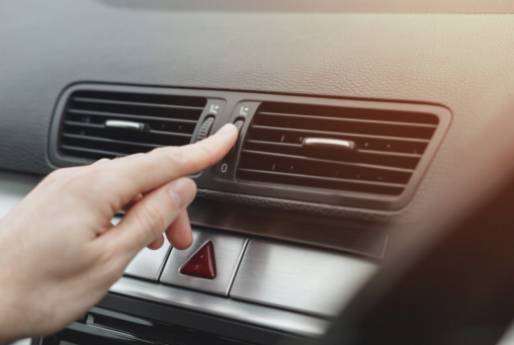The Ultimate Guide to Windscreen Repair Kits: Everything You Need to Know
22 November 2025 by Edward W.As a driver, you know that your windscreen can be vulnerable to damage from flying debris, extreme weather, and other unexpected hazards. Understanding when and how to repair your windscreen can be crucial for maintaining your vehicle's safety and appearance. In this comprehensive guide, we will explore the different types of windscreen damage, the options for repair, and the steps for using a DIY windscreen repair kit. Whether you choose to tackle the task yourself or seek professional assistance, this guide will provide you with the knowledge and resources needed to make an informed decision and ensure the best results for your windscreen repair.

Understanding Windscreen Damage and Repair Options
A car's windscreen is a crucial component that provides structural support to the vehicle and helps protect the driver and passengers from road debris and the elements. Unfortunately, windscreen damage is a common issue that many drivers face. Whether it's a small chip, crack, or scratch, windscreen damage can compromise the safety and aesthetics of the vehicle. There are several types of windscreen damage, and it's important to understand the different options for repair. Minor damage such as small chips and cracks can often be fixed with a windscreen repair kit, while more extensive damage may require professional repair or even a full windscreen replacement. It's important for car owners to be aware of the various repair options available to them, as well as the potential consequences of neglecting windscreen damage. Failure to address small chips and cracks in a timely manner can result in the damage spreading and becoming more severe, potentially leading to the need for a costly windscreen replacement. Overall, understanding windscreen damage and repair options is essential for maintaining the safety and integrity of a vehicle. By being informed about the various repair options and taking prompt action when damage occurs, car owners can effectively address windscreen issues and protect their investment in their vehicle.Selecting the Right Windscreen Repair Kit
When it comes to selecting the right windscreen repair kit, there are a few key factors to consider. Firstly, it's important to choose a kit that is specifically designed for the type of damage your windscreen has incurred, whether it be a small chip or a larger crack. Additionally, you should look for a kit that contains high-quality materials and tools to ensure a successful repair. Finally, consider the ease of use and level of expertise required, as some kits may be more suitable for DIY enthusiasts while others may be best left to professional technicians.The Step-by-Step Process of Repairing Your Windscreen
Repairing your windscreen can be a straightforward process if you have the right tools and knowledge. Here's a step-by-step guide to help you tackle this task:1. Assess the Damage: Before beginning the repair process, carefully inspect the damage to your windscreen. Identify the location and extent of the chip or crack to determine if it can be repaired using a DIY kit.
2. Clean the Windscreen: Thoroughly clean the area around the damaged area with glass cleaner to remove any dirt, debris, or residue. This will ensure that the repair resin adheres properly to the glass.
3. Prepare the Repair Kit: Follow the instructions provided with your windscreen repair kit to prepare the resin and applicator. This may involve mixing components or attaching the applicator to the damaged area.
4. Apply the Resin: Carefully fill the damaged area with the repair resin using the applicator provided in the kit. Ensure that the resin completely fills the chip or crack and removes any air bubbles within the damaged area.
5. Allow the Resin to Cure: Once the damaged area is filled with resin, place a curing strip or film over the repair and expose it to sunlight or UV light. This will cure the resin and create a strong bond with the glass.
6. Remove Excess Resin: After the resin has cured, carefully remove any excess resin using a razor blade or scraping tool. This will create a smooth and even surface on the windscreen.
7. Polish the Repair: Use a glass polishing compound to gently polish the repaired area, blending it with the surrounding glass and improving its clarity.
8. Evaluate the Results: Examine the repaired area from different angles to ensure the chip or crack is no longer visible and the repair has been successful. By following these steps, you can effectively repair minor windscreen damage using a DIY repair kit. However, it's important to note that more extensive or severe damage may require professional windscreen repair services.